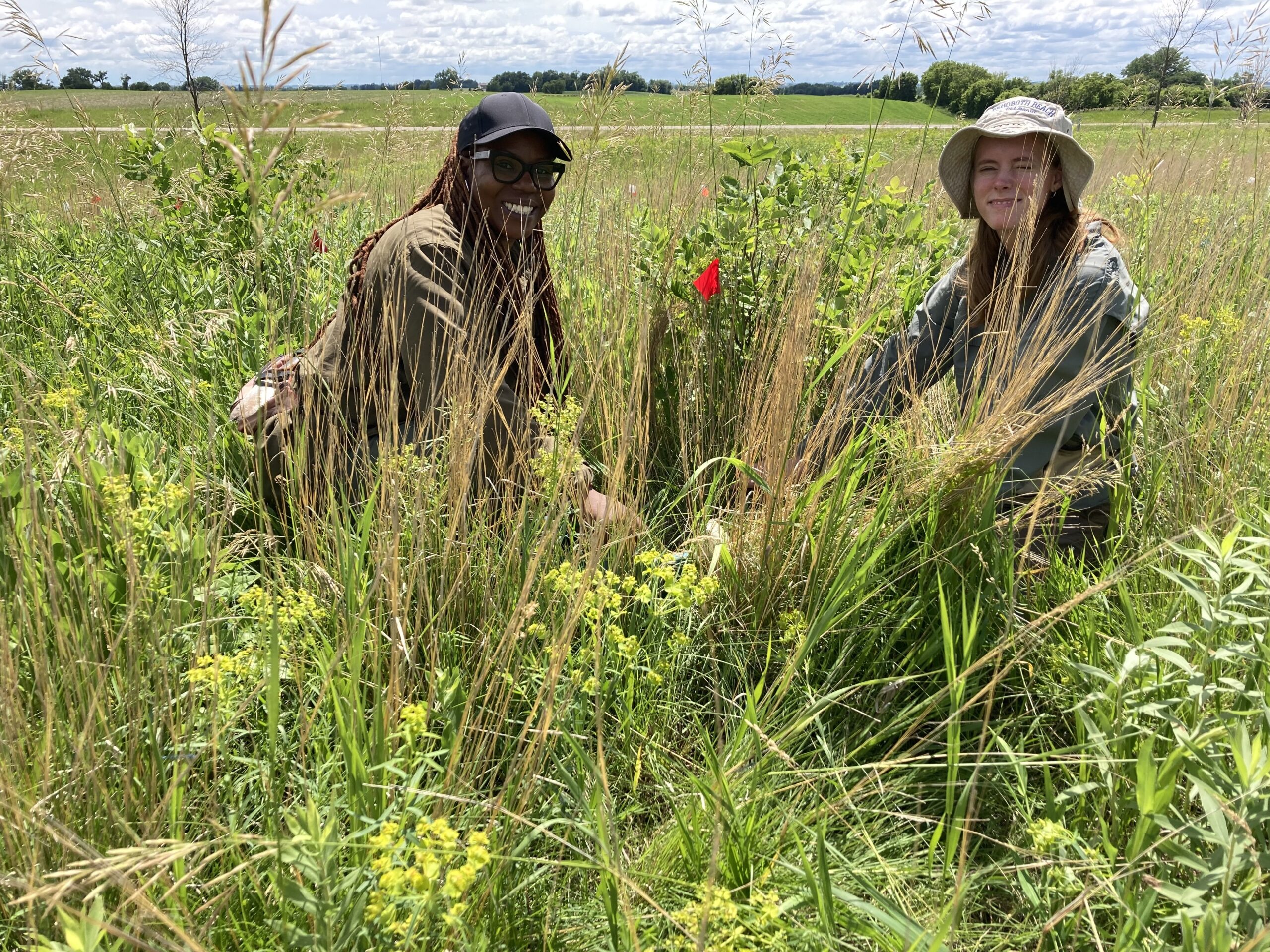Today was the first day of total demography! Team Echinacea started as a whole group at Tower, a remnant prairie site, where Jared gave an overview of total demography. Team Echinacea learned important skills such as communication and collaboration. After total demography was finished at Tower, one group headed to Martinson Approach and another went to East of Town Hall. Echinacea angustifolia pollen has seemed to wind down in the past few days. Today, Grace and Rebecca collected the remaining pollen from the last flowering plants. In the afternoon, everyone had personal project time!
|
||||
|
This week was a busy Monday for team Echinacea. Jennifer from College of Wooster joins us this week along with her research assistants Max and Indigo! This morning started off with round 2 of sweet clover pulling, and was promptly followed by a crash course in pollinator observations. We tried our hand in collecting species in small tubes for ID and then release. A big part of this was learning how to differentiate between flys and bees as some flies can look realllyyy close to a bee. But don’t be fooled! To round out the morning we went out in groups to collect pollen for our pollen and nectar study specifically looking at echinacea angustifolia. After lunch, half of us went and deployed another round of emergence traps while the other half went out and did nectar collection for the pollen and nectar study. Today we welcomed goats to Hjelm. They are already hard at work eating their way through the foliage. Keep up the good work, goats! Most of the humans worked on finishing searching for Stipa in p01 and started planting a new production garden to generate seed to add to the experimental plots. Ian and Liam valiantly continued staking points for the pollinator emergence study. Wyatt and Abby are getting ready to begin a study investigating the effects of fire on pollen and nectar production in Echinacea angustifolia. This project has many excellent collaborators and is part of the MN ENTRF funded research on prescribed fire and ground nesting bees. 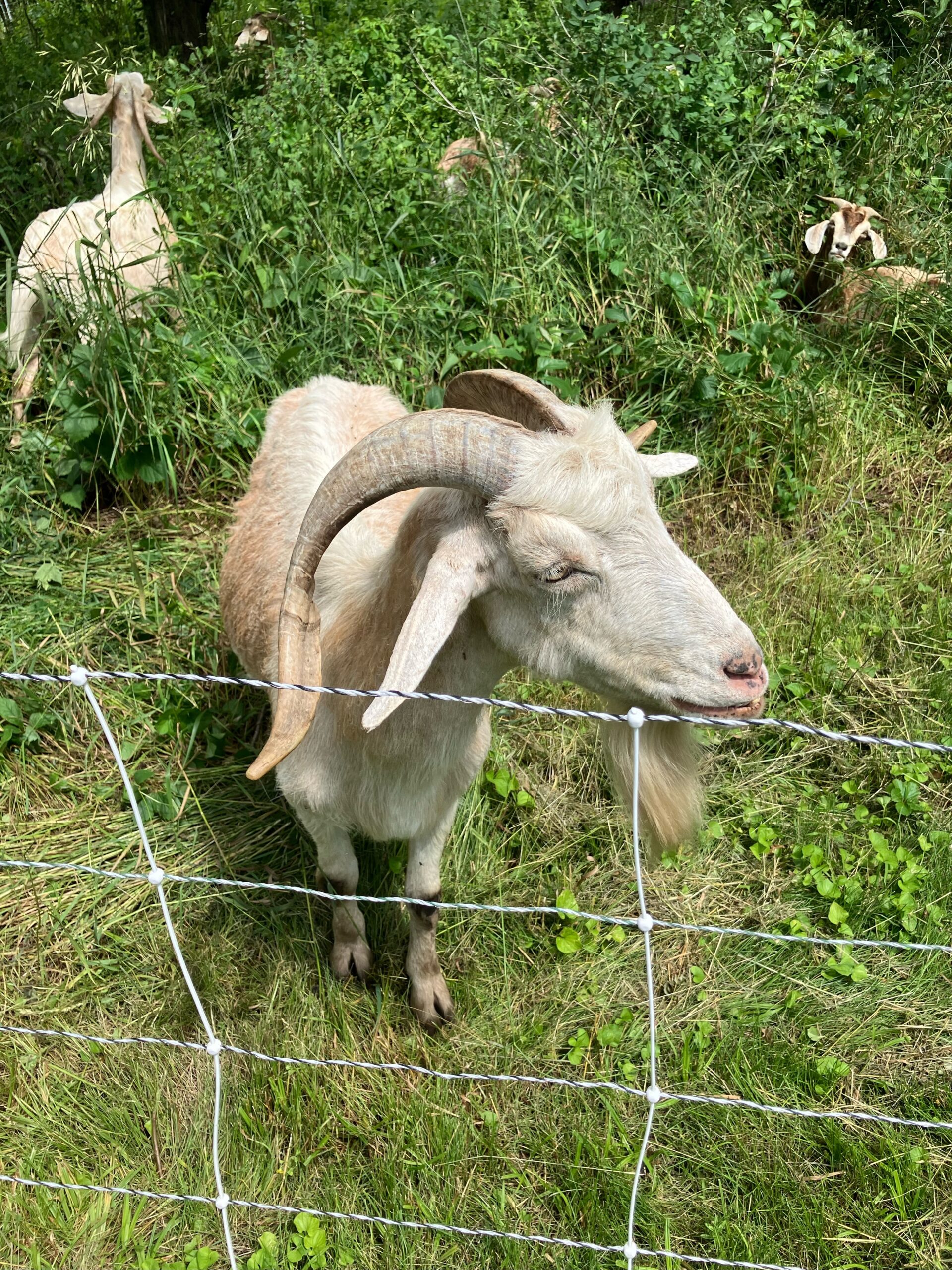  I am a high school science teacher from La Salle High School in Yakima, Washington. Before I was a teacher, I was an ecologist studying plant communities in savanna landscapes. At La Salle, our campus contains nine acres of restored riparian habitat that we manage in partnership with the Yakama Tribal Fisheries Project. My goal this summer is to participate in and learn from Echinacea Project’s ongoing activities and to develop a long-term research project to bring home for science students at La Salle. 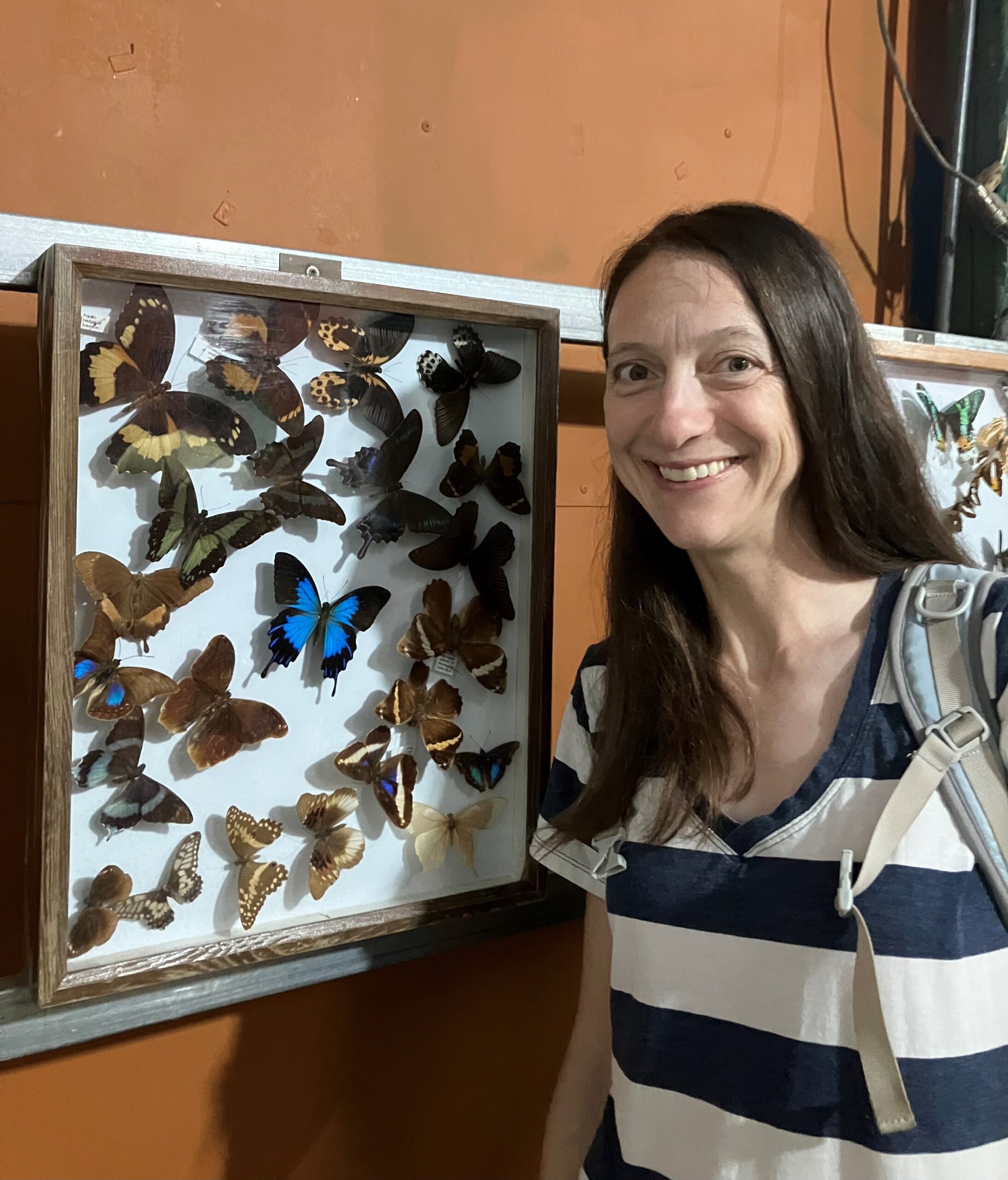 Today the team conducted the second day of Stipa search. This time we came back to know points with Stipa plants using our visor and confirmed if a plant was present. The team learned how to differentiate basal Stipa plants from other grasses in the plot and confirmed the presence of many Stipa grasses that weren’t logged during our first day of Stipa search. In the afternoon the team worked on staking more BB points and collecting/setting up more emergence traps. Today the team went out to Hegg Lake to flag flowering echinacea along with decapitating some pallida. We were joined by collaborators from NDSU who collected pallida samples for pollen and nectar studies. It was the first day of taking demographics of the echinacea this season. Taking the demographics went well and we estimated finding anywhere between 80 to 300 flowering echinacea pallida. Later in the afternoon the team split up to work on independent projects. Including, shooting bb points with the gps, working on proposals, and flagging more echinacea. 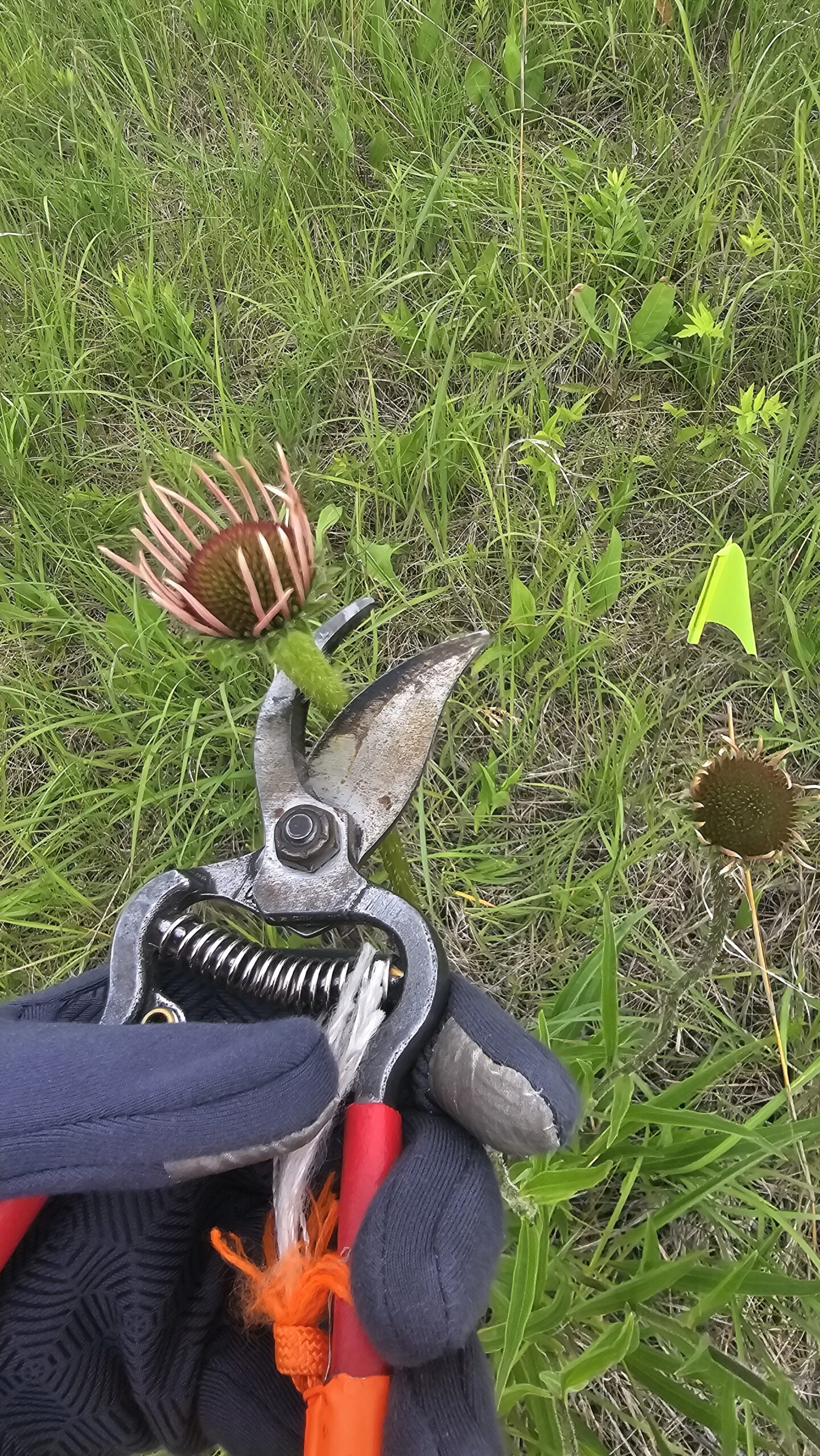 Today the team learned about Hesperostipa spartea (Stipa) which is affectionately known as porcupine grass. After reviewing the protocol for collection, we made our way down to experimental plot p01 where we received a lesson on identifying flowering Stipa and counting the fruits (imagine a long seed with a tail). We documented the number of culms (stems) and fruits as well as missing fruit in our field notes. This was only the first step but the information collected will help determine how the fitness – an organisms ability to survive and reproduce in an ecosystem – of Stipa grown in experimental plots differs from Stipa growing in prairie remnants. 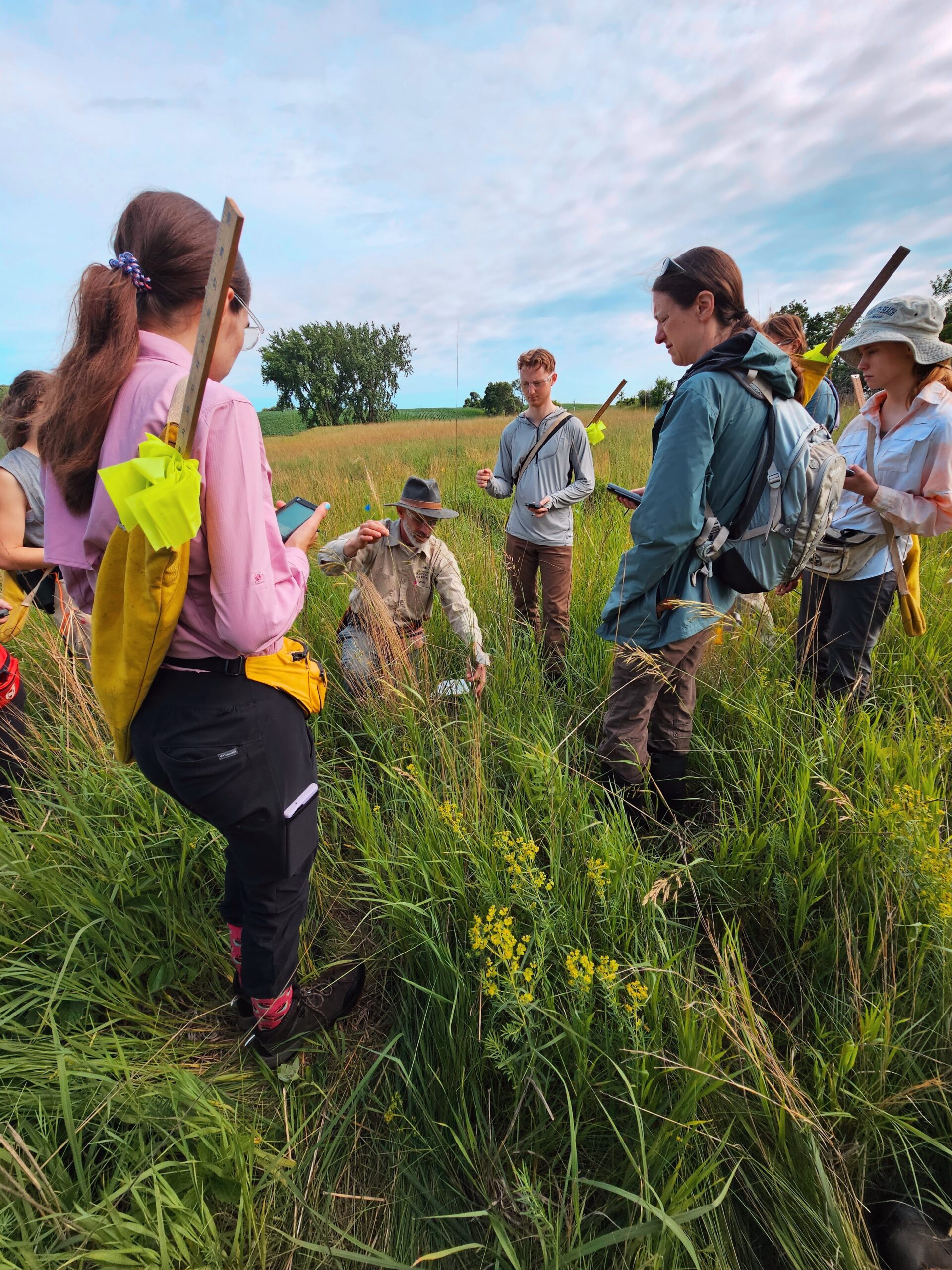 Later that afternoon, a small team retrieved and deployed emergence traps. The contents of the traps were examined and the specimens were prepared for classification.  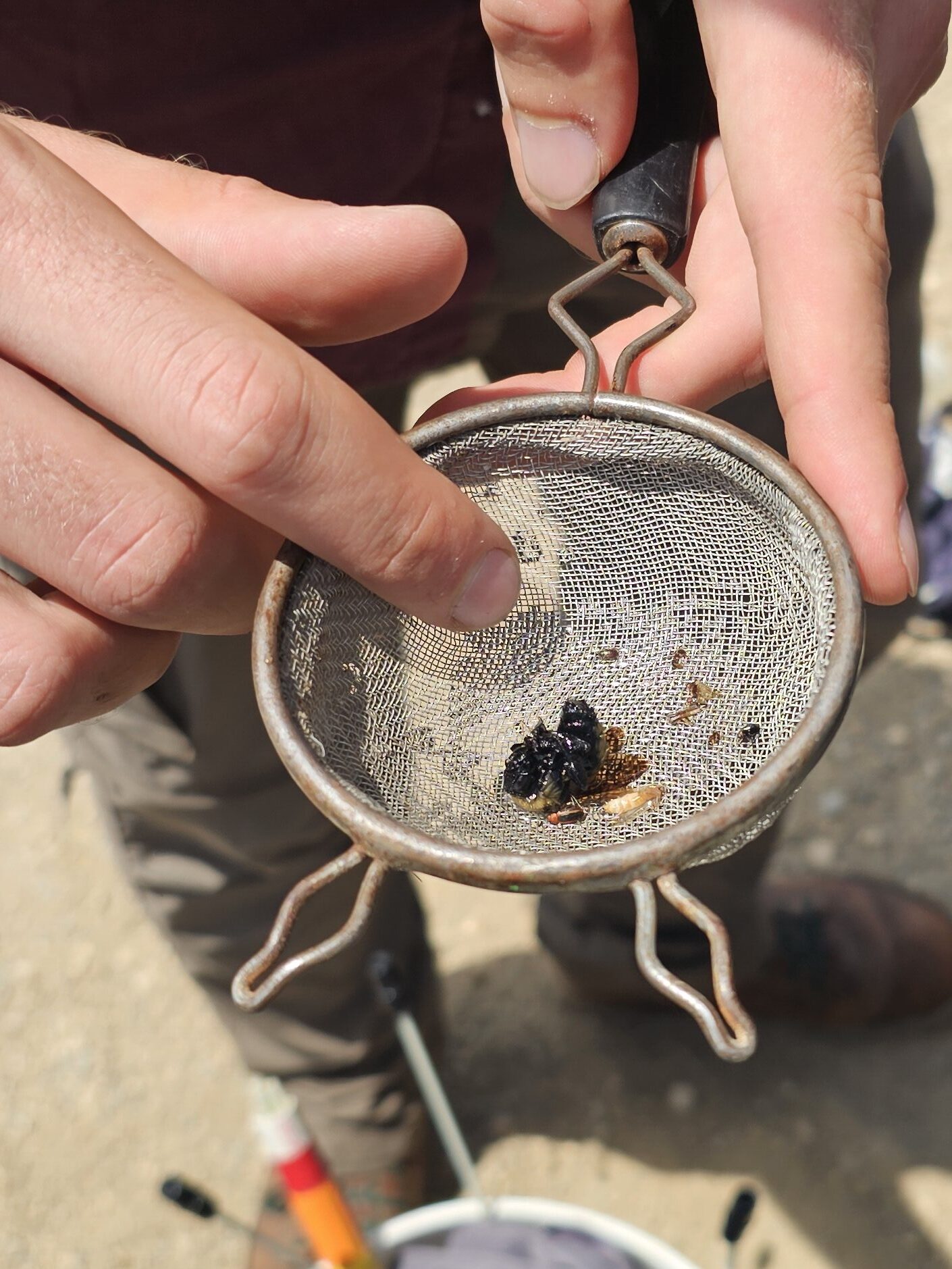 Today was a busy Friday full of many activities! It is officially the first day of summer! Ning, Liam, and Maddie worked in P1 today fixing flags that might be out of place or not in line and also putting signs for positions so it is easier to know where you are. They also checked the flags in the 99 garden. Zach and Emma headed out to P8, where they watered the prairie turnips planted yesterday and planted extra plants. An interesting thing they noticed was that the prairie turnips seemed eaten across the first 3 rows. The team hypothesized that it might be hungry rodent. Ian helped Elise learn how to use the GPS and how to shoot some BB points. At lunch, the team had a discussion about their ABTs (And, But, So), which are goals for what each person wants to research or study further this year. There were many great ideas and lots of feedback in our discussion. In the afternoon, Liam and Zach shot some more BB points. Ian, Maddie, Elise, and Emma and placed some more emergence traps! 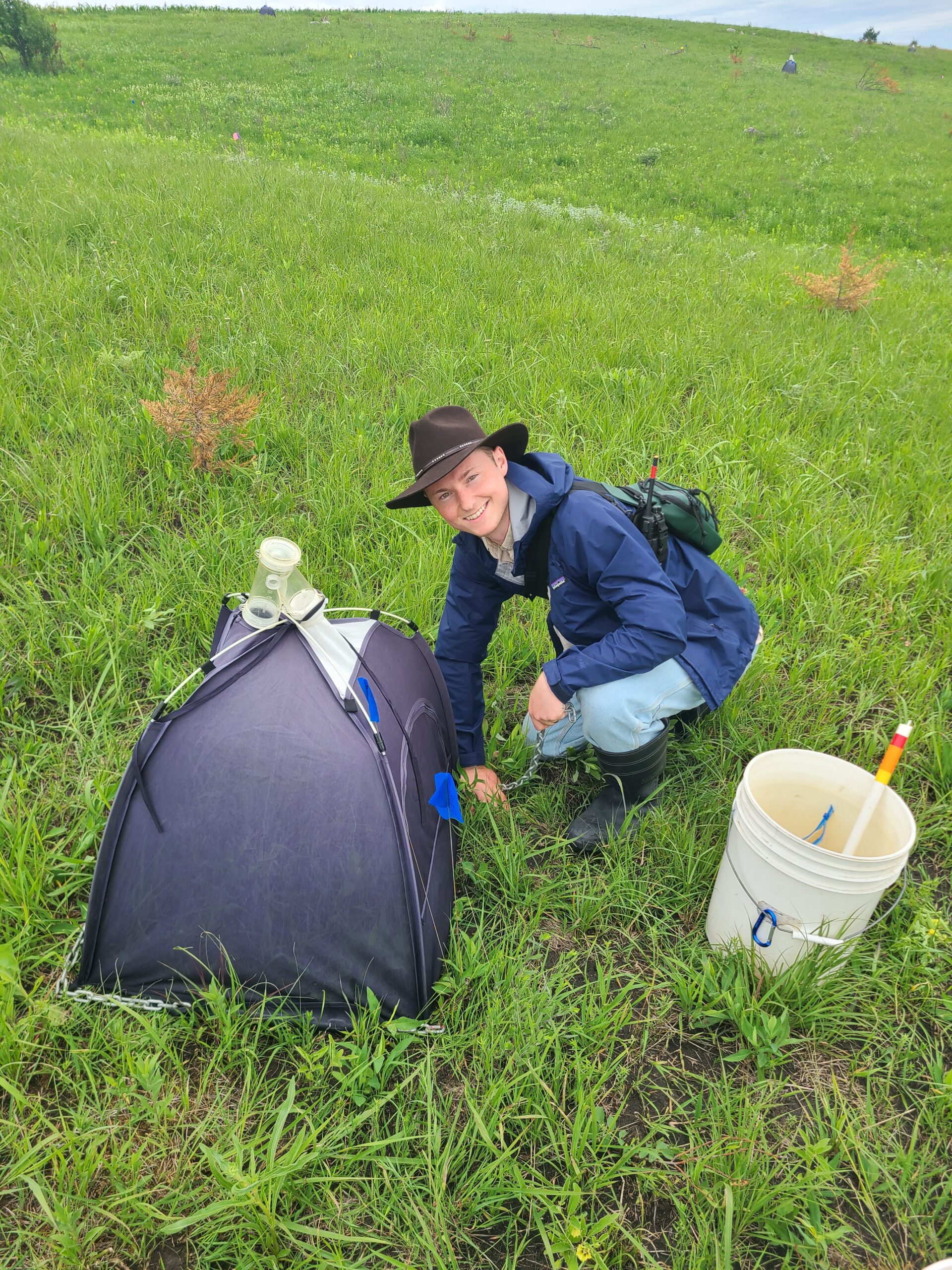 Zach with an emergence trap placed yesterday(6/20/2024) Today was a full day for team Echinacea! Not only is it Elise’s first day on the team, but it’s also summer solstice. This morning Brittany and I went out to Staffanson Prairie Preserve West to finish shooting bb-points. While another team started flagging/planting P8 for a new experiment. The new common garden experiment being added to P8 involves planting prairie turnip to learn how to grow and measure the species while establishing a basis for future studies. Many more updates to come, along with daily posts from other members of the team.
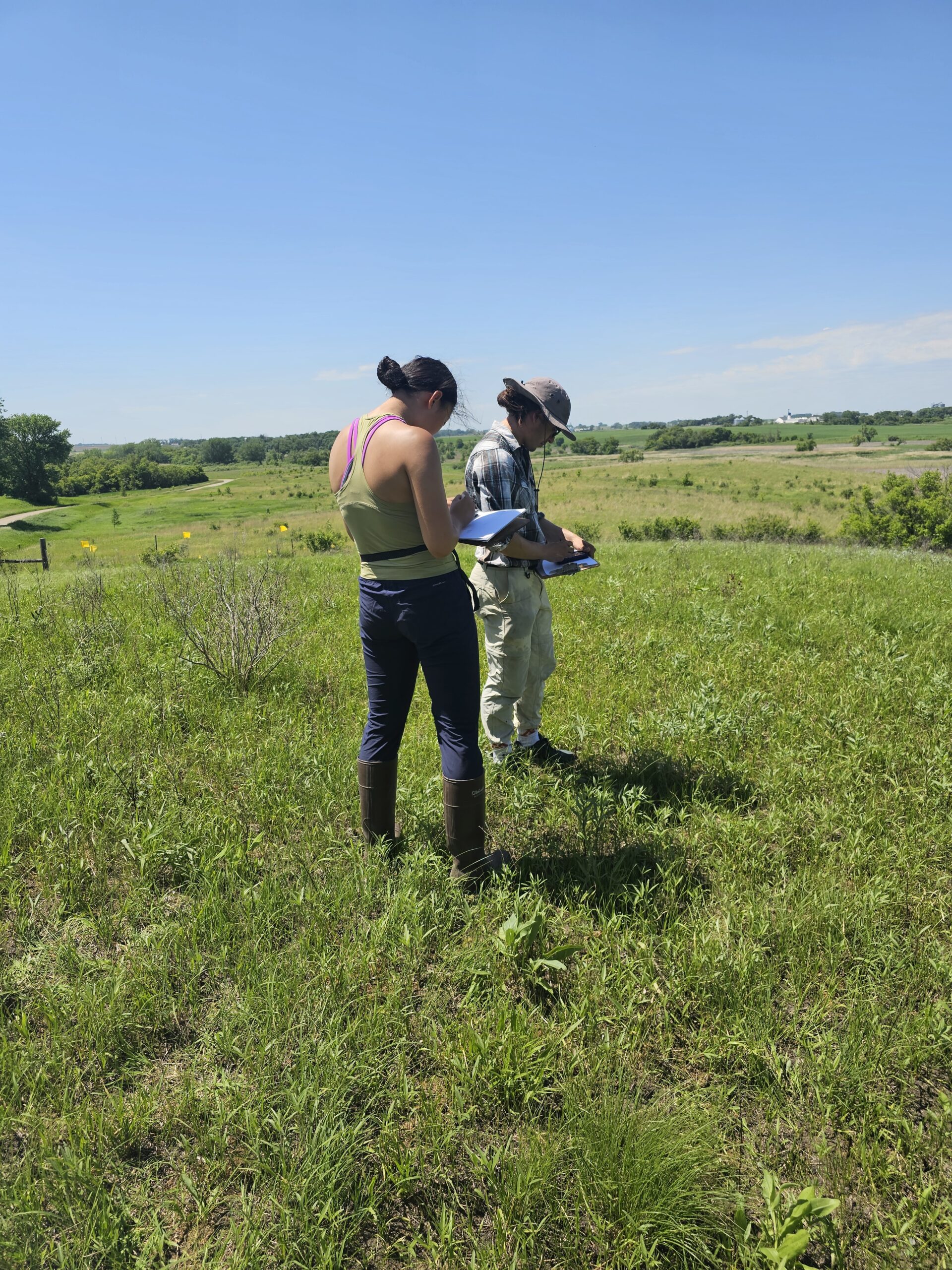 |
||||
|
© 2024 The Echinacea Project - All Rights Reserved - Log in Powered by WordPress & Atahualpa |
||||







